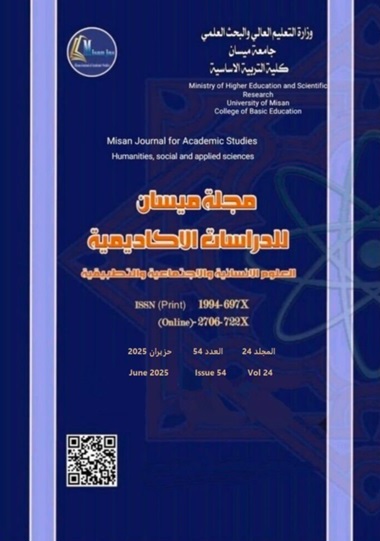Incidence, pattern and management of mandibular fractures in Al-Anbar governorate in 100 patients
Abstract
Mandibular fracture is one of the most common fractures of the maxillofacial region. The pattern of mandibular fractures varies from country to country and these variations can be due to social, cultural, and environmental factors. This study was conducted to evaluate the incidence and pattern and management of mandibular fractures in Al -Anbar governorate. A prospective study of 100 patients with mandibular fractures was conducted in department of oral and maxillofacial surgery /at AL-Ramadi teaching Hospital in AL-Ramadi City from July 2024 to February 2025. These patients were examined both using clinical and radiographic parameters for mandibular fracture. Data concerning age, gender, causes of fracture and sites of fracture were analyzed. Out of 100 patients, 82 (82%) were male patients and 18(18%) were female patients. Most common age group was between 20-29 years. Most common cause of mandibular fracture was road traffic accidents accounting for 58(58 %) cases followed by fall injury in 25(25%) cases. Most common site involved was parasymphysis 39(39%) followed by body16(16%). Most patients of mandibular fractures were treated by open reduction (miniplates fixation. resorbable plate fixation). Rest of the patients were treated with closed reduction (arch bar, arch bars with intermaxillary fixation IMF, eyelet wiring). Only 6% patients were managed by conservative approach. The present study concluded that the young males are the most common category exposing to mandibular fracture due to traffic accident.
Downloads
Copyright (c) 2025 (Humanities, social and applied sciences) Misan Journal of Academic Studies

This work is licensed under a Creative Commons Attribution-NonCommercial-NoDerivatives 4.0 International License.
The copyright is also the copyright of the magazine only.
All articles published in our magazine are subject to license terms
Creative Commons Attribution(CC BY-NC-ND 4.0) This license permits the content to be reproduced, redistributed and reused in whole or in part for any purpose free of charge, without any permission from the author(s), researcher or student.
Works submitted to Maysan Journal of Academic Studies for publication in the journal (CC BY-NC-ND 4.0) license terms. Where available content can be shared, distributed and replicated provided there is no commercial profit and appropriate credit must be given to the original source through sources or citations. It is mandatory to review any material used from other sources including shapes, tables, and images for re-use under the terms of the Creative Commons License (CC BY-NC-ND 4.0).Provided that there is no modification to the original content



